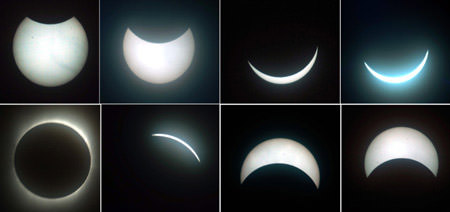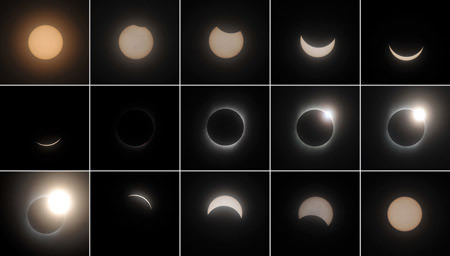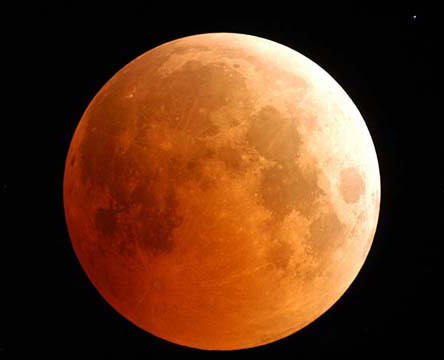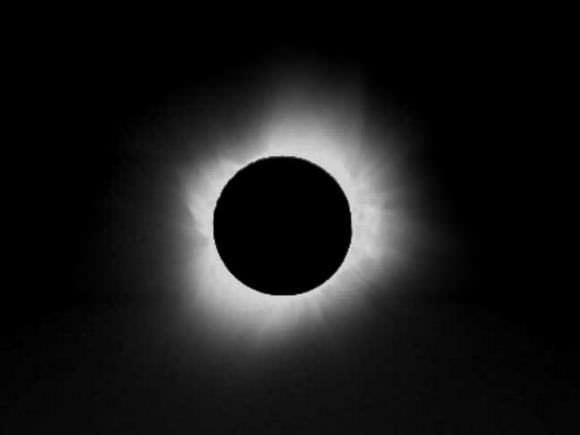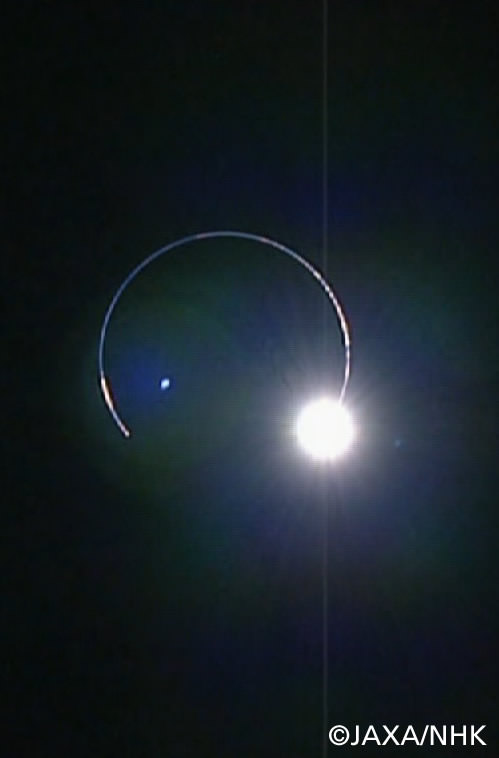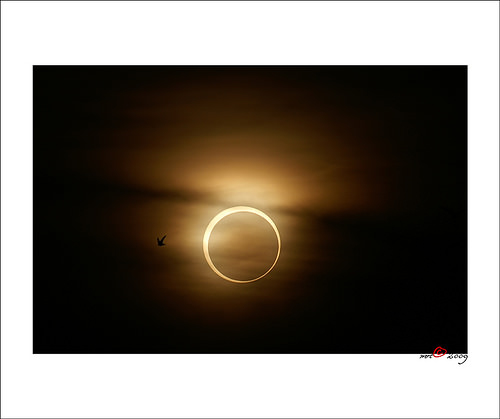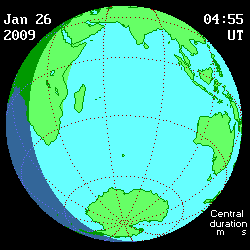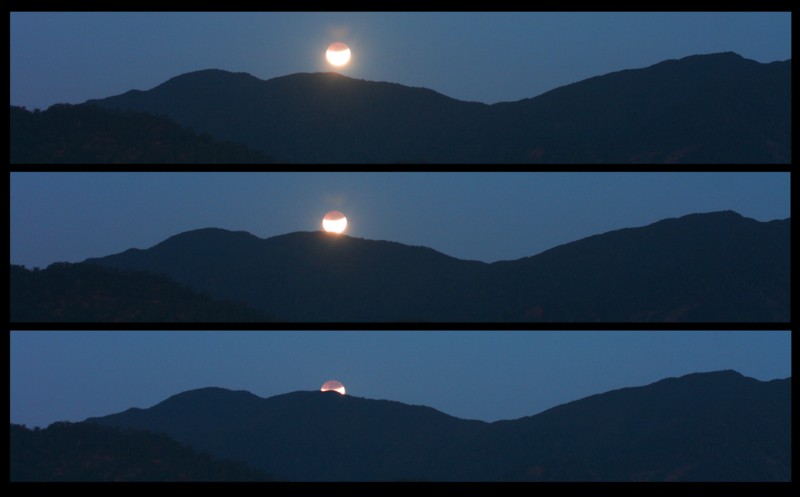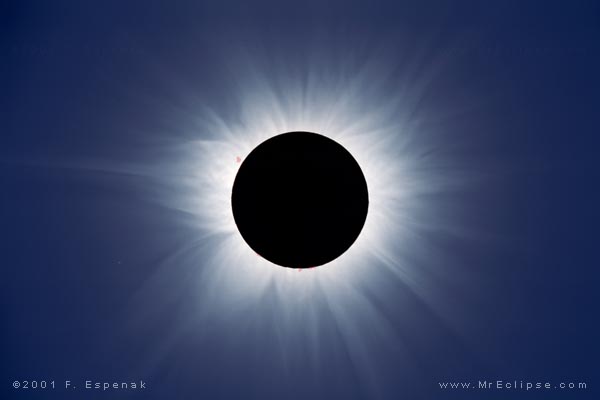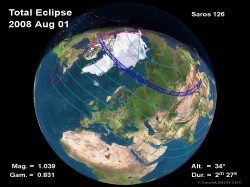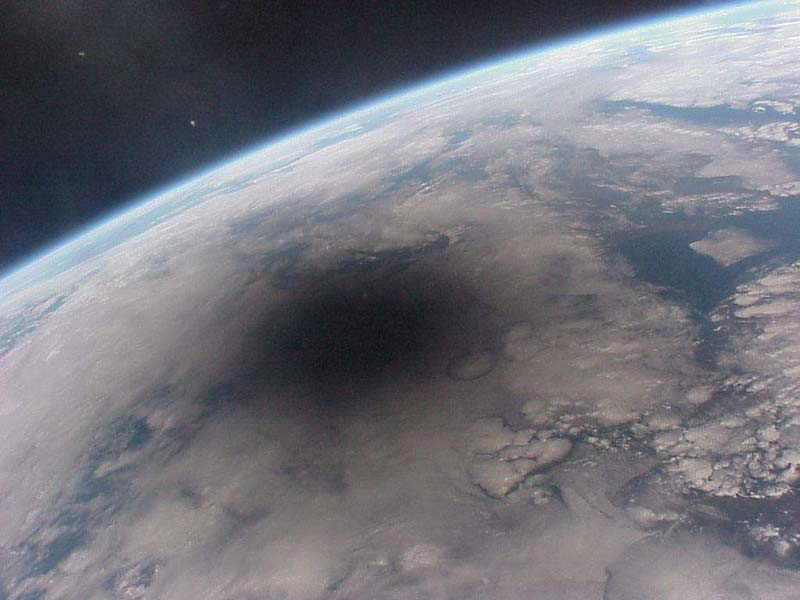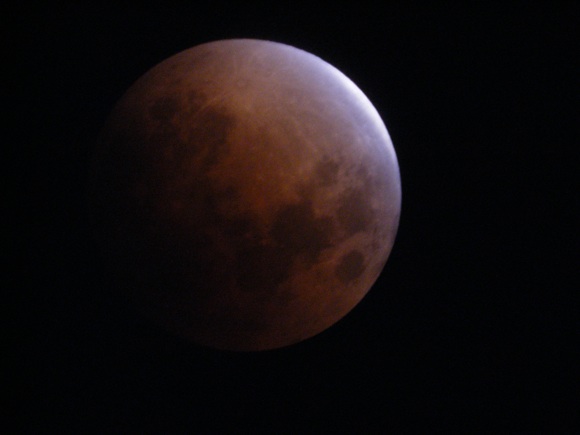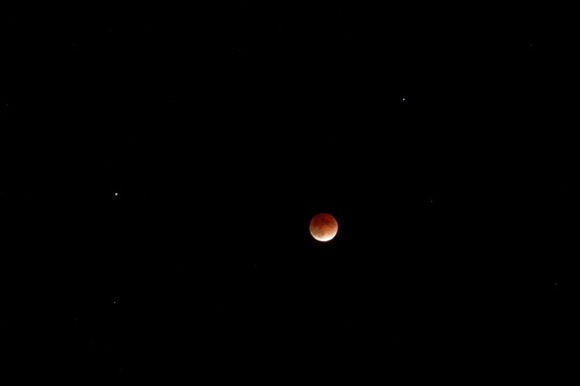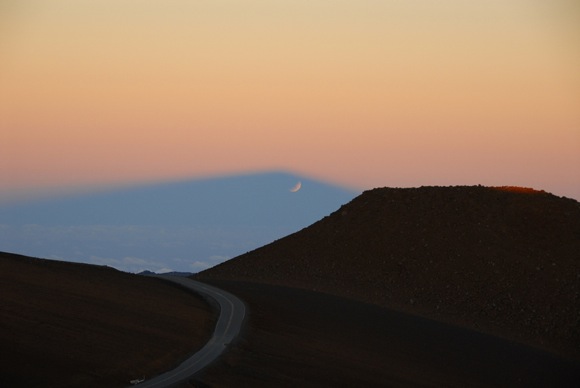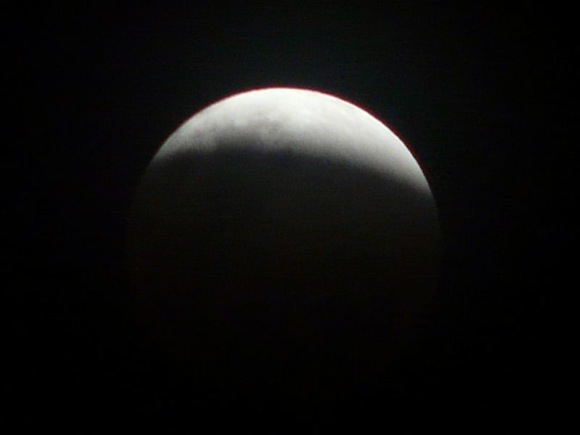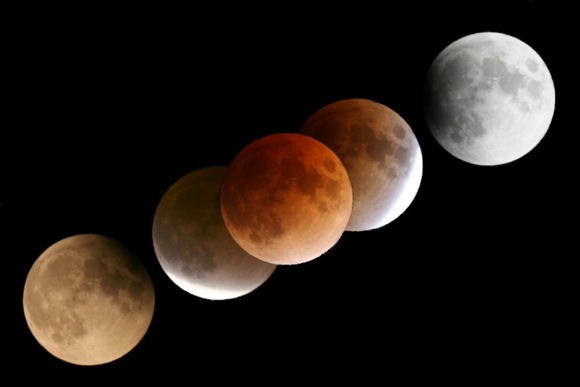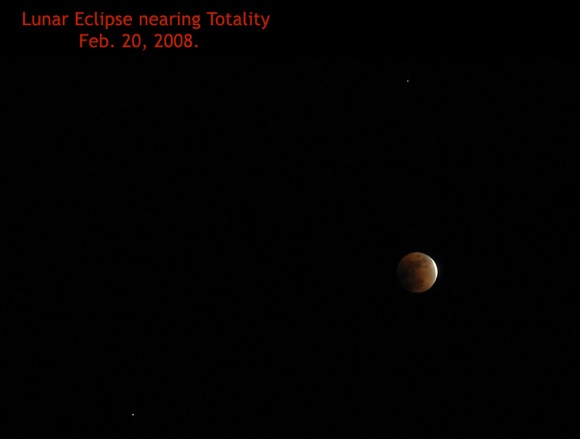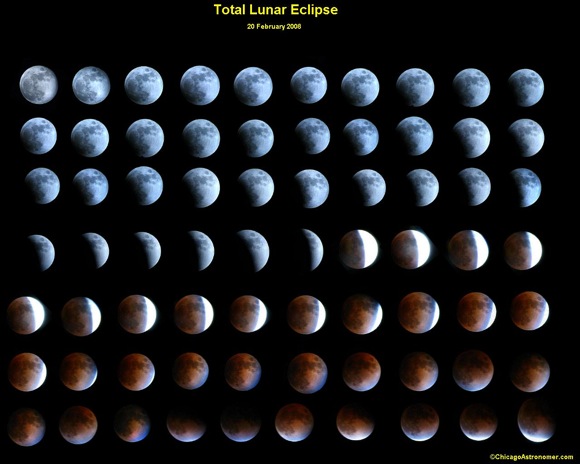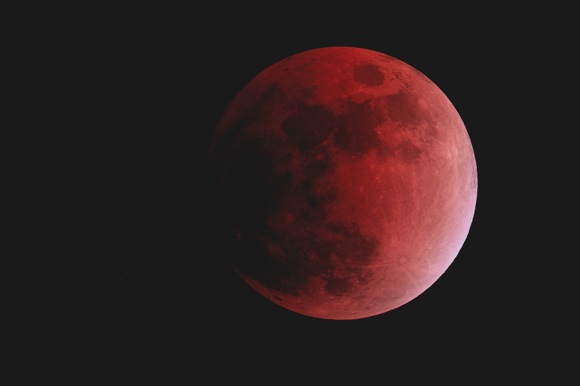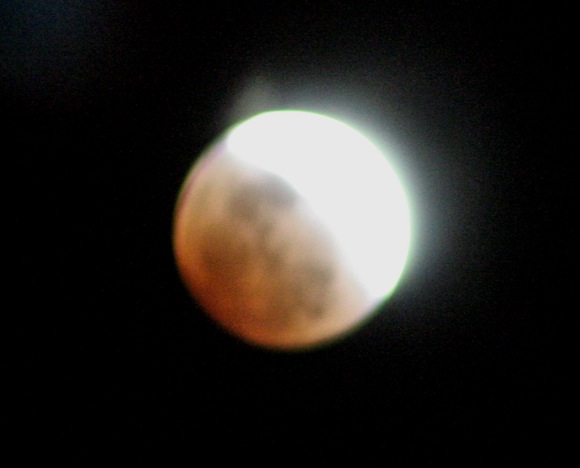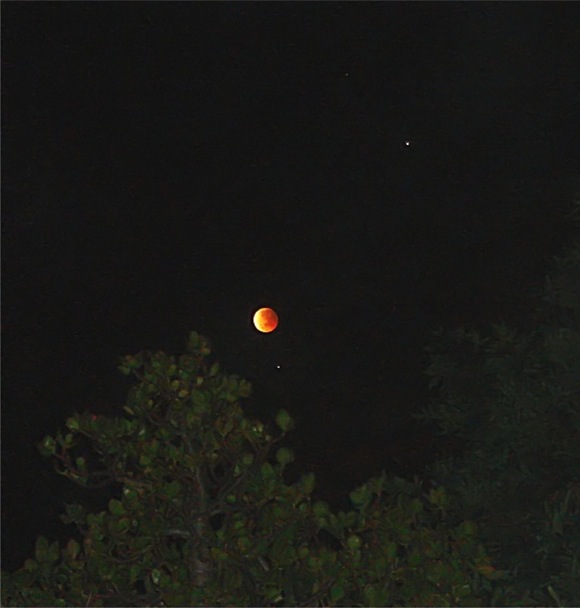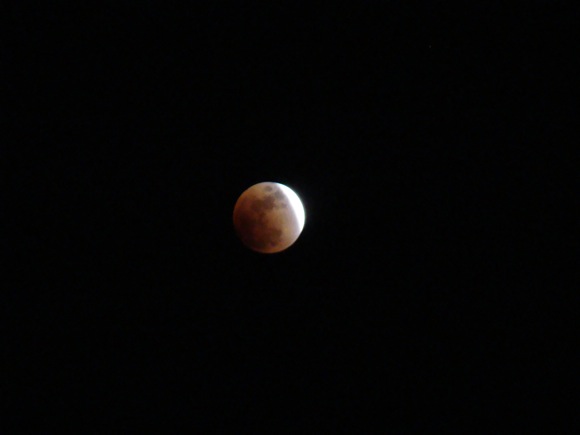[/caption]
The total solar eclipse which just occurred on the 22nd of July 2009 was the longest maximum duration of the 21st century. Not since Saros 1991 have astronomers and eclipse chasers been treat to such an event! Totality lasted over six and a half minutes at maximum. duration. The event started in India along the western shore near Surat moved towards Butan and reached the southern tip of Nepal and the northern edge of Bangladesh.
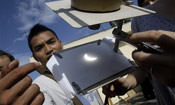 For other lucky astronomers like Vietnamese student Dang Anh Tuan at Hanoi National University of Education, the eclipse path also took the event over cities like Chengdu, Suining, Chonging, Wuhan, Xiaogan, Hangzhou, and Shanghai – and event which yielded five minutes of totality. Leaving Shanghai the shadow path raced across the ocean, to fall across islands such as Toshima and Akusaki south of Japan and eventually the Marshall islands. Where was the longest point? The maximum eclipse duration of 6 minutes and 43 seconds occurs far off the coast in the Pacific Ocean! Are you ready to become an eclipse chaser? Then follow me…
For other lucky astronomers like Vietnamese student Dang Anh Tuan at Hanoi National University of Education, the eclipse path also took the event over cities like Chengdu, Suining, Chonging, Wuhan, Xiaogan, Hangzhou, and Shanghai – and event which yielded five minutes of totality. Leaving Shanghai the shadow path raced across the ocean, to fall across islands such as Toshima and Akusaki south of Japan and eventually the Marshall islands. Where was the longest point? The maximum eclipse duration of 6 minutes and 43 seconds occurs far off the coast in the Pacific Ocean! Are you ready to become an eclipse chaser? Then follow me…
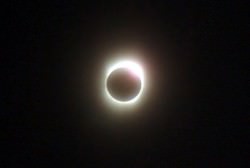 I’ve always wanted to go on an eclipse chasing journey, but I’m afraid I’ll never quite be rich or well enough, unless it happens somewhere near me. But, my world is one that is both large and very small at the same time… And filled with wonderful friends from every corner. Bill Fish of Lubrizol Advanced Materials made my day by sending me some photos shared by their employees immediately after the eclipse had ended.
I’ve always wanted to go on an eclipse chasing journey, but I’m afraid I’ll never quite be rich or well enough, unless it happens somewhere near me. But, my world is one that is both large and very small at the same time… And filled with wonderful friends from every corner. Bill Fish of Lubrizol Advanced Materials made my day by sending me some photos shared by their employees immediately after the eclipse had ended.
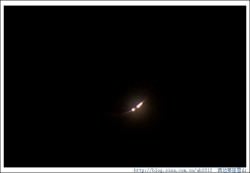 Seeing such incredible beauty, like this image of Bailey’s Beads taken in Chong Qing, and in just a few hours meeting great people like Jessica Bian, Kelly Zhou, Jun-Sheng Cao, Leo Chi, Mars Meng, Lucy Wang and Helen Tong felt so wonderful. Truly astronomy is a language we all speak! By roughly 9:00 in the morning, this is what they would have seen from their office windows or rooftops. Can you imagine what an exciting day it must have been?!
Seeing such incredible beauty, like this image of Bailey’s Beads taken in Chong Qing, and in just a few hours meeting great people like Jessica Bian, Kelly Zhou, Jun-Sheng Cao, Leo Chi, Mars Meng, Lucy Wang and Helen Tong felt so wonderful. Truly astronomy is a language we all speak! By roughly 9:00 in the morning, this is what they would have seen from their office windows or rooftops. Can you imagine what an exciting day it must have been?!
 Well, needless to say, once I saw something like that, all my worries and cares for the day seemed so small. Even though I couldn’t leave my desk, the marvelous opportunity for me to become an eclipse chaser had just opened up like a fortune cookie right before my eyes. It was time for me to learn Chinese… and check out this awesome video done by Hubei Jingmen!
Well, needless to say, once I saw something like that, all my worries and cares for the day seemed so small. Even though I couldn’t leave my desk, the marvelous opportunity for me to become an eclipse chaser had just opened up like a fortune cookie right before my eyes. It was time for me to learn Chinese… and check out this awesome video done by Hubei Jingmen!
But he wasn’t alone… And neither was I. Millions of folks all over China were witnessing the eclipse and with each video I felt more and more like I was there, too.
“In the Zhejiang Haining, huge amounts of people were out to observe the wonderful total solar eclipse. The observation person is sea of people. But two big marvelous sight’s secret directions are the Sun, the Earth and the Moon…. “three meet”.”
 Now, let’s travel to Beijing where the sky was enveloped in mist. Despite the weather, some 200 astronomy watchers queued in front of the Beijing Astronomical Observatory at 6:30 a.m. Staff at the observatory said the eclipse had sparked interest in astronomy. Yang Jing, a high-school student from Urumqi said. “I didn’t expect such a big crowd to watch the eclipse!”
Now, let’s travel to Beijing where the sky was enveloped in mist. Despite the weather, some 200 astronomy watchers queued in front of the Beijing Astronomical Observatory at 6:30 a.m. Staff at the observatory said the eclipse had sparked interest in astronomy. Yang Jing, a high-school student from Urumqi said. “I didn’t expect such a big crowd to watch the eclipse!”
Our next video comes from Chengdu… You can imagine the city stopping for just a moment to look skyward. “As soon as the totality happened, the clouds closed in so we couldn’t see the corona. That’s a pity,” said Zhen Jun, a man whose work unit had given the day off for the spectacle.
 Now we move on to Hangzhou… When thousands of people thronged outdoors for the longest total solar eclipse of the 21st century, animals at the zoo in east China’s Hangzhou City also reacted, quickly and confusedly. The shadow of the moon disoriented birds whose body clock and direction depend on the sun. Red-crowned cranes and flamingos that had been wandering or drinking water suddenly fell asleep during the brief blackout of eclipse. But when the sun rays came out again several minutes later, the birds emerged from their cages and started the life of another “day.”
Now we move on to Hangzhou… When thousands of people thronged outdoors for the longest total solar eclipse of the 21st century, animals at the zoo in east China’s Hangzhou City also reacted, quickly and confusedly. The shadow of the moon disoriented birds whose body clock and direction depend on the sun. Red-crowned cranes and flamingos that had been wandering or drinking water suddenly fell asleep during the brief blackout of eclipse. But when the sun rays came out again several minutes later, the birds emerged from their cages and started the life of another “day.”
 Even though I don’t understand a word of Chinese, I understand every word of “human”. Listen to them… Listen to the people talk and the children! How I wish I were there, too! Said Kang Hui:“The celestial phenomenon was a marvelous sight”. Are you ready to move again and follow the shadow? Then, let’s take a trip to Shanxi Linfen…
Even though I don’t understand a word of Chinese, I understand every word of “human”. Listen to them… Listen to the people talk and the children! How I wish I were there, too! Said Kang Hui:“The celestial phenomenon was a marvelous sight”. Are you ready to move again and follow the shadow? Then, let’s take a trip to Shanxi Linfen…
Now, I’ll race you to Hong Kong! Hundreds of people thronged into the Hong Kong Space Museum Wednesday morning for the Partial Solar Eclipse Observation activity. The public watched the eclipse using telescopes equipped with a safe filtering system and projection under guidance provided by the Space Museum.
Gosh, some of that footage feels like you could just reach right out and wrap your hand around that Moon, doesn’t it? Now let’s head to the middle of Anhui Yi County…
 This one where you can see the corona dazzling is simply extraordinary. Can you imagine what it would feel like to be able to see this in real life? Come on… Let’s continue our eclipse chasing trip to Shanghai! It was raining in Shanghai when the total eclipse occurred at 9:35 a.m. The city put extra police on streets, and more than 30 police vessels patrolled the coast. Only street lamps were left on, as the city turned off all landscape lighting to allow people to watch the solar eclipse.
This one where you can see the corona dazzling is simply extraordinary. Can you imagine what it would feel like to be able to see this in real life? Come on… Let’s continue our eclipse chasing trip to Shanghai! It was raining in Shanghai when the total eclipse occurred at 9:35 a.m. The city put extra police on streets, and more than 30 police vessels patrolled the coast. Only street lamps were left on, as the city turned off all landscape lighting to allow people to watch the solar eclipse.
 In Shanghai, more than 4,000 people ended up in suburban Yuehu Park of Sheshan Observatory and Yangshan Deep Water Port, two prime spots in the city, to observe the eclipse. Shanghai Science Hall also organized a public viewing session in downtown Fuxing Park and seventeen observation stations were set up in the solar eclipse path from Yunnan province to Zhejiang province.
In Shanghai, more than 4,000 people ended up in suburban Yuehu Park of Sheshan Observatory and Yangshan Deep Water Port, two prime spots in the city, to observe the eclipse. Shanghai Science Hall also organized a public viewing session in downtown Fuxing Park and seventeen observation stations were set up in the solar eclipse path from Yunnan province to Zhejiang province.
Now we travel to the Henan Luoyang and say hello to these great kids and their equally excited parents and grandparents as we catch a partial eclipse.
“Luoyang’s light rain was intermittent, in the morning about 10:45, the Sun opened out the cloud layer to reveal the face of what was to come. The residents might see the partial solar eclipse! This kind of picture has not been seen here for a very long time. The Henan Luoyang partial solar eclipse looks just like the raging fire phoenix raising slowly.”
Shall we continue to Taiwan? Then grab us a cup of coffee and I will meet you at the Taibei Municipal Astronomy Scientific Culture Hall.
Shall we travel to Shenyang? This was also a partial solar eclipse location, but witnesses said the Moon “seemed like it was curved”.
Now, come with us to Ningbo. This one is so beautiful I wept when I saw it…
“This morning we just watched the total solar eclipse, which happens every 500 years. When the whole sun is blacken by the Moon. Everyone is highly excited. It’s pity I forgot to bring the camera by my side and the moment is passed away soon. But I am still lucky to see the sight. 500 years……how significant!”
 When I was a child, I was charmed by a story about Ping the Duck, who lived on the Yangtze River. The last of the hundreds of videos I have watched today that I’d like to share with you is part of the Yangtze River collection.
When I was a child, I was charmed by a story about Ping the Duck, who lived on the Yangtze River. The last of the hundreds of videos I have watched today that I’d like to share with you is part of the Yangtze River collection.
Enjoy this beautiful composite image taken by Yang Lei at a park in southwest China’s Chongqing Municipality. It has been my most wonderful pleasure over the day to spend time in the East…
Chasing the Sun!
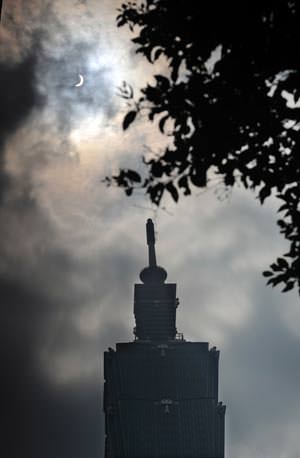
My many thanks to Bill Fish for getting me started, Jessica Bian for investigating and translating and the wonderful people at Sina for sharing!

